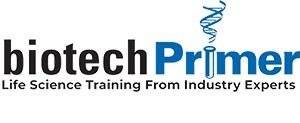Drug Commercialization Process: From Research to Market

The drug commercialization process is critical in bringing new pharmaceuticals to market. It involves a complex series of steps, from initial research and development to clinical trials, regulatory approval, and commercialization. For pharmaceutical companies, the commercialization process is critical not only for bringing new drugs to market but also for ensuring the success and profitability of the company. This blog post will examine the drug commercialization process and explore the critical steps in bringing a new drug to market. We will also examine some of the challenges and opportunities faced by pharmaceutical companies during this process and discuss the vital role of regulation and market competition in shaping the industry. Whether you are a healthcare professional, investor, or simply curious about the pharmaceutical industry, this post will provide valuable insights into the complex and fascinating world of drug commercialization.
How New Medicines Are Developed
Developing new medicines is a complex and lengthy process involving several research and testing stages and regulatory approval from government agencies. The process begins with the discovery and research stage, where scientists identify a promising target for treatment and explore the properties of potential drug candidates. This is followed by preclinical testing, where potential drug candidates undergo rigorous testing in the laboratory and in animal models to assess their safety and effectiveness. If a drug candidate shows promise in preclinical testing, it can proceed to clinical trials, which involve carefully controlled studies involving human volunteers to evaluate the safety and effectiveness of the drug. Clinical trials typically take several years and involve multiple phases. Before a new medicine can be made available to patients, it must be approved by regulatory agencies such as the FDA or EMA, who review data from clinical trials to evaluate the safety and effectiveness of the drug. Once a drug is approved and on the market, ongoing monitoring is essential to identify any new safety concerns or side effects that may arise. Developing new medicines requires significant investment in research and development to ensure that new drugs are safe and effective for patients.
The Different Stages Of The Drug Development Process
The drug development process is complex and lengthy, involving several research, testing, and regulatory approval stages. Here’s a detailed overview of the different stages of the drug development process.
Discovery and Target Identification
This is the initial stage of drug development, where researchers identify a target molecule, protein, or gene involved in the disease. This stage involves extensive research and experimentation, including molecular biology, biochemistry, and genetics. Once a target has been identified, researchers design and test potential drugs that can interact with the target and modulate its activity.
Preclinical Development
In this stage, potential drug candidates undergo extensive testing in laboratory and animal models to evaluate their safety and efficacy. The preclinical development phase involves several key steps, including lead optimization, pharmacology, and toxicology testing. Preclinical development aims to identify the most promising drug candidates for further human testing.
Investigational New Drug (IND) Application
If a drug candidate shows promise in preclinical testing, the drug developer must file an Investigational New Drug (IND) application with regulatory authorities such as the FDA. The IND application provides detailed information about the drug’s chemical composition, manufacturing process, preclinical data, and proposed clinical trial design.
Clinical Development
Clinical development is when potential drug candidates are tested on human subjects in carefully controlled clinical trials. Clinical trials are divided into three phases:
- Phase 1: This phase involves testing the drug in a small group of healthy volunteers to evaluate its safety, dosage, and pharmacokinetics (how it is absorbed, metabolized, and eliminated by the body).
- Phase 2: This phase involves testing the drug in a larger group of patients with the disease to evaluate its efficacy and side effects. Phase 2 trials may also evaluate different doses or formulations of the drug.
- Phase 3: This phase involves testing the drug in a large group of patients with the disease to confirm its efficacy, safety, and optimal dosage. Phase 3 trials are typically randomized, double-blind, and placebo-controlled.
New Drug Application (NDA) Submission
If a drug candidate has successfully completed Phase 3 clinical trials and demonstrated safety and efficacy, the drug developer can file a New Drug Application (NDA) with regulatory authorities such as the FDA. The NDA provides detailed information about the drug’s safety and efficacy, clinical trial data, manufacturing process, and proposed labeling and prescribing information.
Regulatory Approval
If regulatory authorities approve the NDA, the drug can be marketed and sold to patients. However, regulatory approval is subject to ongoing monitoring and post-marketing surveillance to ensure the safety and efficacy of the drug.
Surveillance
Once a drug is on the market, it is subject to ongoing monitoring and post-marketing surveillance to identify any new safety concerns or adverse events. Drug manufacturers must report any adverse events to regulatory authorities, and ongoing surveillance can help ensure that patients receive safe and effective treatments. The drug development process is complex and lengthy, involving several research, testing, and regulatory approval stages. The process can take several years and requires significant investment in research and development to ensure that new drugs are safe and effective for patients.
What Is Drug Commercialization?
Drug commercialization refers to bringing a new drug to market and making it available for purchase and use by patients. This involves several key steps, including regulatory approval, manufacturing, marketing, and distribution. Once a new drug has been approved by regulatory agencies such as the FDA or EMA, the drug manufacturer must obtain a license to manufacture and distribute the drug. The manufacturer must also develop a marketing strategy to promote the drug and make it available to healthcare providers and patients. This can involve advertising campaigns, sales representatives, and partnerships with healthcare organizations. The drug manufacturer must also ensure that the drug is manufactured in accordance with strict quality control standards to ensure that each dose is consistent and safe for patients. After the drug is on the market, continual monitoring and surveillance are necessary to spot any potential new safety issues or side effects. Drug commercialization can be a complex and lengthy process that requires significant investment in research and development, as well as regulatory compliance and marketing expertise.
Stepwise Guide To The Drug Commercialization Process
Drug commercialization is a crucial stage in drug development, where patients make a new drug available for purchase and use. This procedure, which includes multiple crucial procedures, can be difficult and drawn out. A step-by-step explanation of the drug commercialization process is given below.

Step 1: Regulatory Approval
The first step in drug commercialization is obtaining regulatory approval from agencies like the FDA or EMA. This involves submitting data from clinical trials to demonstrate the safety and effectiveness of the drug. The regulatory agency will review the data and determine whether the drug should be approved for use.
Step 2: Manufacturing
Once regulatory approval is obtained, the drug manufacturer must obtain a license to manufacture and distribute the drug. The manufacturer must also develop a manufacturing process that meets strict quality control standards to ensure that each dose is consistent and safe for patients.
Step 3: Marketing Strategy
The drug manufacturer must develop a marketing strategy to promote the drug and make it available to healthcare providers and patients. This can involve advertising campaigns, sales representatives, and partnerships with healthcare organizations. The marketing strategy should also consider the target patient population, pricing, and distribution channels.
Step 4: Launch
Once the manufacturing process is in place and the marketing strategy is developed, the drug can be launched. This involves making the drug available through pharmacies, hospitals, and other healthcare providers.
Step 5: Post-Marketing Monitoring
Following the drug’s launch, continuous monitoring and surveillance are crucial to spot any potential new safety issues or adverse effects. Drug producers must notify regulatory organizations of any adverse occurrences, and continuous monitoring can guarantee that patients receive safe and efficient therapies. In conclusion, drug commercialization is a complex process that involves several key steps, including regulatory approval, manufacturing, marketing, launch, and post-marketing surveillance. Drug manufacturers must navigate regulatory compliance, develop a marketing strategy, and ensure the drug is safe and effective for patients. With careful planning and execution, drug commercialization can help bring new treatments to needy patients.
Take charge of your professional growth and learn the essential scientific, business, and regulatory principles that are critical to successfully bringing a drug to market. Our comprehensive drug development courses are designed to cater to both non-scientists and scientists who are new to the industry.
Conclusion
Drug commercialization is a critical step in bringing new treatments to patients. The process involves several stages, each requiring careful planning and execution and compliance with regulatory requirements and quality control standards. Despite the complexity and length of the drug commercialization process, the potential benefits of bringing a new drug to market can be substantial, including improved patient outcomes, a better quality of life, and reduced healthcare costs. Drug manufacturers can help ensure patients receive safe and effective treatments that meet their healthcare needs by following a stepwise approach to drug commercialization. As new drugs continue to be developed, drug commercialization will remain an important part of the healthcare landscape, helping bring new treatments to patients and improve health outcomes worldwide.
Frequently Asked Questions
How Long Does It Take to get a medicine On The Market?
According to the trade association PhRMA, developing a new pharmaceutical, from its original discovery to its regulatory approval, typically takes between 10 and 15 years.
What procedures are used for commercializing biotechnology goods?
The steps of discovery, validation, development, registration, and commercialization are part of this circular process.

Biotech Primer is your go-to source for interactive training across the biotechnology, pharmaceutical, molecular diagnostics, and medical device sectors. Explore a range of in-depth biotech courses designed to deepen your understanding of key principles and applications in the field.
Learn More










